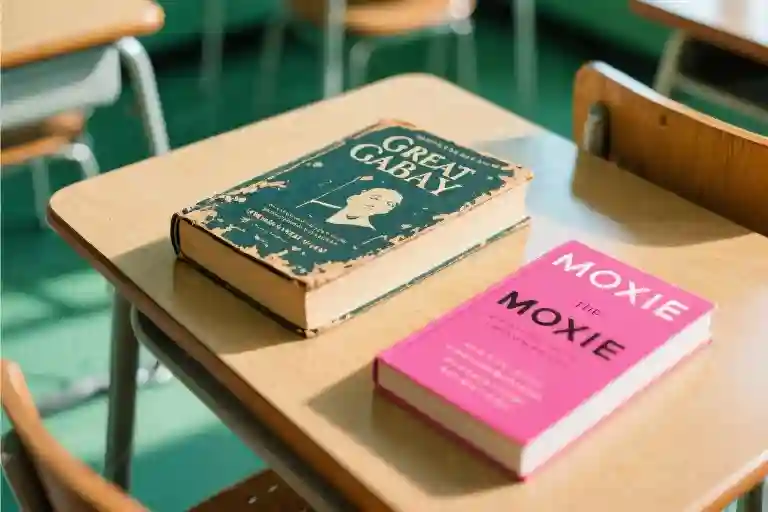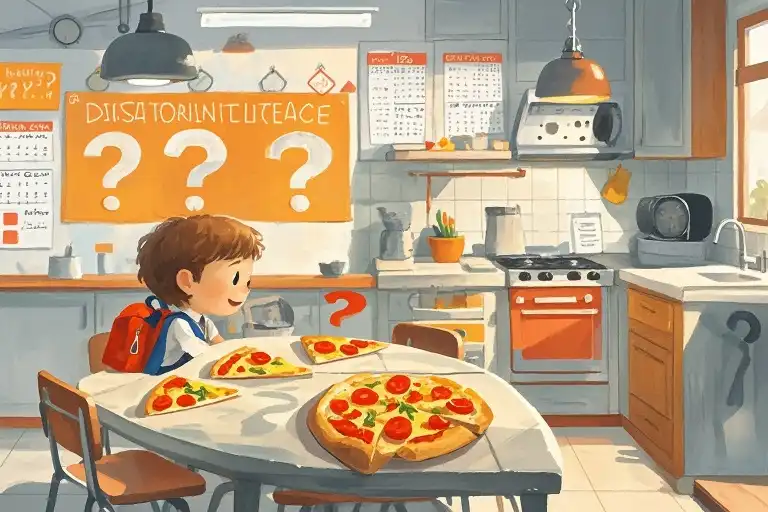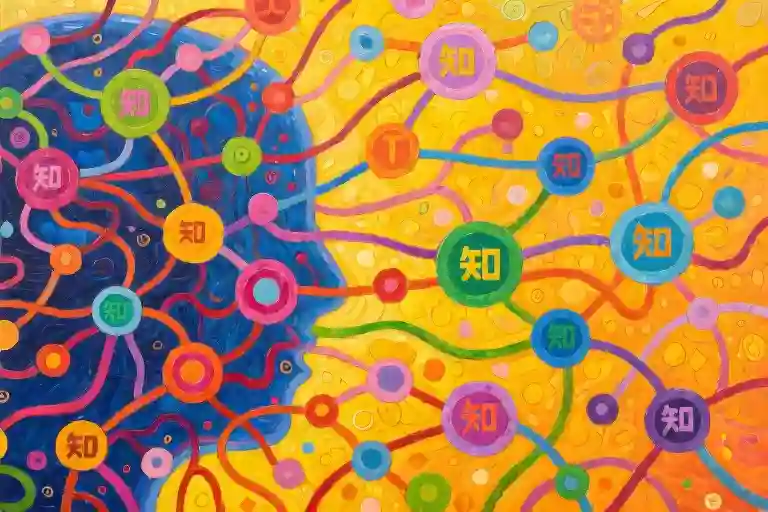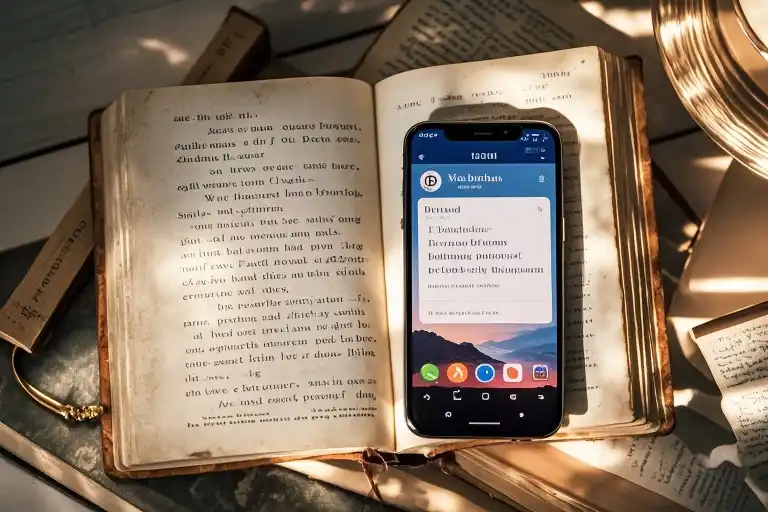The scene lingers in my mind months after watching Moxie—that moment when Lucy, the high school protagonist, slams her copy of The Great Gatsby on the desk and demands: “Why are we still reading this book?” Her frustration isn’t just teenage rebellion; it’s a legitimate challenge to the literary canon we’ve held sacred for generations.
Fitzgerald’s masterpiece occupies an almost mythical space in American culture. Taught in nearly every high school, praised as the “Great American Novel,” its prose shimmers with that iconic green light and those haunting final lines about boats against the current. I remember my first read at sixteen—how the glittering surface of West Egg masked something hollow underneath, how Gatsby’s yearning felt universal yet peculiarly American. Even now, the novel’s mood of “hauntedness” (as Fitzgerald described it in his letters) clings to me like fog over Long Island Sound.
But Lucy’s question gnaws at me. In an era where Booksmart delivers razor-sharp critiques of sexism and Mean Girls satirizes systemic misogyny with bite, Gatsby’s portrayal of Daisy—the golden girl who exists primarily as an object of desire—feels increasingly archaic. The novel’s beauty is undeniable, but does its emotional resonance justify the cultural pedestal we’ve placed it on? When students today encounter Tom Buchanan’s casual racism or the passive destruction of Myrtle Wilson, their discomfort isn’t dismissive; it’s a demand for accountability.
This tension between literary brilliance and problematic elements isn’t unique to Gatsby, but the novel’s ubiquity makes it a lightning rod. We’re left balancing two truths: Fitzgerald crafted a timeless meditation on aspiration and loss, while also reflecting attitudes that modern readers rightly question. Perhaps the real value lies in holding both ideas simultaneously—appreciating the artistry while interrogating its limitations.
So when Lucy asks why we still read Gatsby, she’s not dismissing literature; she’s asking us to engage more critically with what we preserve as “classic.” That green light still beckons, but now it illuminates harder questions about who gets to define greatness—and who gets left out of the story.
The Moxie Challenge: When Pop Culture Questions Classics
That moment in Moxie still lingers – when Lucy slams her copy of The Great Gatsby on the desk and demands to know why we’re still assigning this relic. It’s a scene that crystallizes what many educators and students quietly debate: do literary classics hold up under modern scrutiny, or have they become cultural baggage we refuse to unpack?
Amy Poehler’s film positions itself among a new wave of high school stories like Booksmart and Mean Girls, but with a distinct agenda. Where Mean Girls wrapped social commentary in plastic comedy and Booksmart delivered its feminist message with raucous energy, Moxie goes for the curricular jugular. The Guardian called it less ‘punchy’ than its peers, but that might be precisely what makes its challenge significant – it’s not satire, but a sincere interrogation of what we consider worthy of study.
Lucy’s frustration isn’t just about dusty prose or historical distance. Her critique lands on how Fitzgerald’s world treats its women – Daisy reduced to a golden girl, Myrtle to a tragic mistress, Jordan to a cynical observer. The male gaze isn’t just present in Gatsby; it’s the very lens through which we experience the story. When Lucy asks why we’re still centering this narrative, she’s questioning whose voices get preserved as ‘great’ and whose get relegated to footnotes.
Film critics have noted Moxie‘s uneven execution, but its literary critique resonates because it mirrors real classroom dynamics. Roger Ebert’s review of Mean Girls praised its ‘satirical bite,’ yet that film never questions the canon itself – it simply navigates the social structures the canon reflects. Moxie goes further, suggesting that continuing to teach Gatsby without addressing its gender politics might be perpetuating the very systems we claim to examine.
This isn’t about dismissing Fitzgerald’s achievement. The green light symbolism, that haunting final line about boats against the current – these remain masterclasses in thematic resonance. But Moxie forces us to sit with an uncomfortable truth: literary brilliance and problematic elements can coexist in the same text. The film’s value lies in refusing to let us off the hook with easy appreciation, demanding we engage with why this particular American myth still holds sway over our reading lists.
Perhaps the most compelling aspect of Moxie‘s challenge is how it reframes the conversation about classics. It’s not asking whether Gatsby is good literature (that’s beyond dispute), but whether good literature automatically deserves its privileged position when that position goes unquestioned. In an era where students increasingly demand relevance from their curricula, Lucy’s slammed book might be the wake-up call educators need – not to discard the old, but to teach it with clearer eyes about what it contains.
The Duality of Gatsby: Literary Brilliance and Problematic Values
Fitzgerald’s prose in The Great Gatsby still takes my breath away – that luminous description of Daisy’s voice “full of money,” the haunting green light at the end of dock, the way time itself seems to dissolve during Gatsby’s reunion with Daisy. The novel operates like a perfectly tuned instrument, each sentence vibrating with layered meaning. That final passage about “boats against the current” remains one of literature’s most quoted metaphors for the human condition.
Yet rereading it as an adult, I can’t unsee what teenage me missed – how Daisy Buchanan exists primarily as an object of male desire, her personality flattened into a symbol of Gatsby’s aspirations. Feminist critics have long noted how she’s denied interiority, her famous response to learning her daughter is a girl (“I hope she’ll be a fool – that’s the best thing a girl can be in this world”) serving more as social commentary than authentic character development. Tom Buchanan struts through scenes with his “cruel body” and casual racism, embodying patriarchal privilege without meaningful critique from the narrative voice.
Goodreads reveals the modern reader divide – five-star reviews praising the novel’s poetic language sit alongside one-star dismissals calling it “a celebration of toxic masculinity.” One college student’s comment particularly resonates: “We’re told this book captures the American Dream, but whose dream? Rich white men chasing unattainable women?” The tension between Fitzgerald’s technical mastery and his dated gender politics creates legitimate discomfort for contemporary audiences, especially when taught as unquestioned literature canon.
What fascinates me isn’t whether Gatsby is ‘good’ or ‘bad’ – that binary misses the point – but how its artistic merits coexist with perspectives that feel increasingly alien. The same passages that dazzle with metaphorical richness can simultaneously make modern readers cringe. This duality makes the novel particularly valuable for discussion precisely because it resists easy categorization, forcing us to engage critically rather than consume passively.
Perhaps the green light’s true power lies in how it symbolizes different things to different generations – for Fitzgerald’s era, the elusive American Dream; for today’s readers, maybe the challenge of reconciling artistic greatness with evolving social values. The boats keep beating against that current, but the shoreline keeps changing.
Fitzgerald’s Haunted Vision: Between Timelessness and Timebound Truths
That letter Fitzgerald wrote about Gatsby’s ‘hauntedness’ lingers in my mind like the green light at the end of Daisy’s dock. He wasn’t just crafting a Jazz Age melodrama—he was bottling a very specific existential tremor, the kind that surfaces when you realize your brightest dreams might be built on rotten foundations. This explains why Gatsby’s parties feel simultaneously electric and empty, why Nick’s narration thrums with equal parts wonder and unease.
The 1920s context matters profoundly here. When Fitzgerald describes Daisy’s voice being ‘full of money,’ he’s crystallizing an entire era’s collision between old wealth and new aspirations. Women had just won the vote, Prohibition turned drinking into rebellion, and the stock market’s artificial glitter masked deep inequalities. Gatsby’s obsession with reinventing himself mirrors America’s own identity crisis during this period—that tension between who we were, who we pretended to be, and who we might become.
Yet this historical framing also highlights where contemporary readers might bristle. The novel’s treatment of Myrtle Wilson—a working-class woman punished brutally for desiring upward mobility—feels particularly jarring through modern feminist lenses. Jordan Baker’s athletic independence gets undercut by her casual dishonesty. Even Daisy, for all her privilege, remains trapped in what feminist critic Leslie Fiedler called ‘the golden girl’ archetype—less a person than a symbol of unattainable ideals.
What fascinates me is how Fitzgerald himself seemed aware of these limitations. His letters reveal an author haunted not just by personal demons, but by the impossibility of fully transcending one’s cultural moment. The ‘hauntedness’ he engineered into Gatsby’s world wasn’t merely aesthetic—it was an honest admission that every generation’s dreams carry the fingerprints of their particular time. This might be why the novel still resonates: not despite its dated elements, but because it so nakedly exposes how even our most transcendent longings remain tethered to flawed human contexts.
Perhaps this explains why Gatsby survives classroom debates where other classics falter. Its very imperfections—the racial stereotypes, the gendered power dynamics—become teachable moments about how literature both reflects and challenges its era. When Lucy in Moxie rails against the book, she’s not wrong about its problematic aspects. But the deeper magic of Fitzgerald’s haunted masterpiece lies in how it invites us to hold two truths simultaneously: that art can be profoundly of its time, yet speak across generations precisely by acknowledging those limitations.
Teaching Gatsby to a New Generation
The question isn’t whether The Great Gatsby deserves its place in the literary canon—that much seems settled. The real challenge lies in making Fitzgerald’s Jazz Age masterpiece resonate with students who see more of Tom Buchanan’s entitlement than Jay Gatsby’s romantic idealism in their own world. Recent surveys show only 38% of Gen Z students report enjoying assigned classics, with many citing outdated social values as their primary barrier to engagement.
Some educators have found success by pairing Gatsby with contemporary texts like Moxie. One high school teacher in Oregon structures her unit as a debate: students must defend either keeping Gatsby on the syllabus or replacing it with modern alternatives, using textual evidence from both sources. The approach honors the novel’s literary merit while acknowledging its problematic elements—Daisy’s shallow characterization, the casual racism in Wolfsheim’s portrayal, the glorification of obsessive love.
What emerges from these classrooms isn’t a dismissal of Gatsby’s brilliance, but a more nuanced appreciation. Students begin to see the green light not just as a pretty metaphor, but as part of a larger conversation about how we romanticize unreachable goals. They critique the Buchanans’ privilege while recognizing Fitzgerald’s own critique of it. Most importantly, they learn to engage with classics not as sacred texts but as living documents that still have things to teach us—if we’re willing to ask the right questions.
The solution might lie in what one teacher called ‘the annotated syllabus approach.’ Before studying Gatsby, students examine the cultural context of the 1920s alongside modern gender studies concepts. They read Fitzgerald’s letters about hauntedness alongside feminist critiques of Daisy’s characterization. The goal isn’t to condemn the novel through contemporary lens, but to map where its timeless themes and period-specific limitations intersect.
Perhaps what Gatsby needs in our classrooms isn’t less attention, but more—more context, more conversation, more willingness to sit with its contradictions. As one student put it after a particularly heated debate, ‘It’s not that the book is bad. It’s that we’re finally reading it the way adults instead of being told what to think about it.’ That shift—from passive reception to active engagement—might be what saves Gatsby for future generations.
Revisiting Classics Through a Modern Lens
The question lingers in the air like the green light at the end of Daisy’s dock – why do we keep returning to these pages? Lucy’s challenge in Moxie isn’t just about one book; it’s about our relationship with the literary canon itself. That moment when she throws her copy of The Great Gatsby on the table isn’t simply teenage rebellion – it’s a generational demand for relevance.
Perhaps what makes this conversation so vital isn’t finding definitive answers, but learning to hold two truths simultaneously. We can admire Fitzgerald’s prose – those shimmering sentences about boats beating against currents – while acknowledging how his female characters move through the narrative as projections rather than people. The haunting quality he deliberately crafted now haunts us differently, making us question who gets to be haunted in literature and who merely haunts the margins.
For educators navigating these waters, the solution might lie in teaching the conflict itself. A well-designed lesson could place Lucy’s critique alongside Nick Carraway’s famous judgment of Tom and Daisy as ‘careless people’ – examining who gets to be careless in which eras. The classroom becomes a space where we don’t abandon classics, but read them in conversation with contemporary voices like Moxie.
What if we approached these texts not as sacred objects but as living conversations?The further reading list might include Elaine Showalter’s A Literature of Their Own alongside the original novel, or pair Gatsby’s parties with clips from Amy Poehler’s film. The goal shifts from defending the canon to understanding why certain stories endure while others demand reevaluation.
So let’s leave the question open, as all good literature does. Share your experience – when has a classic novel surprised you by becoming newly relevant? Or frustrated you by feeling painfully outdated? The most honest tribute to Fitzgerald’s masterpiece might be this ongoing debate about who and what we choose to remember.





